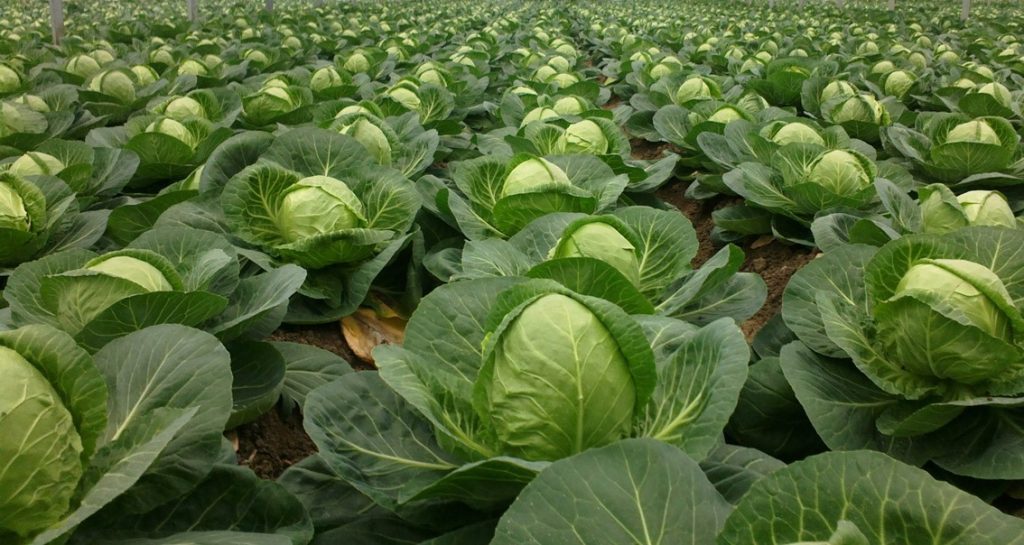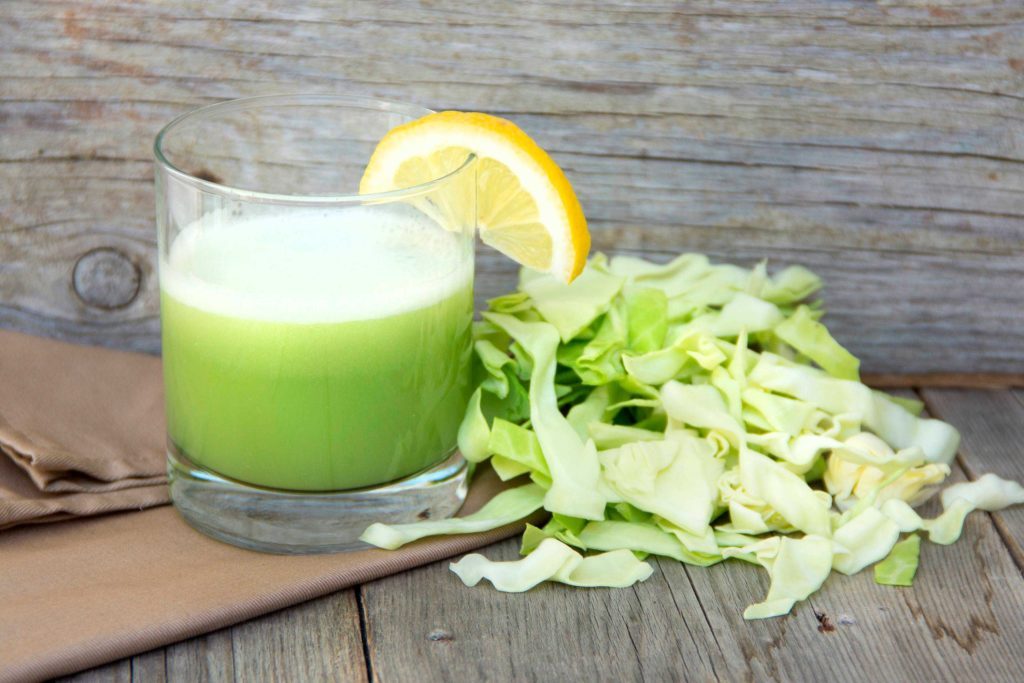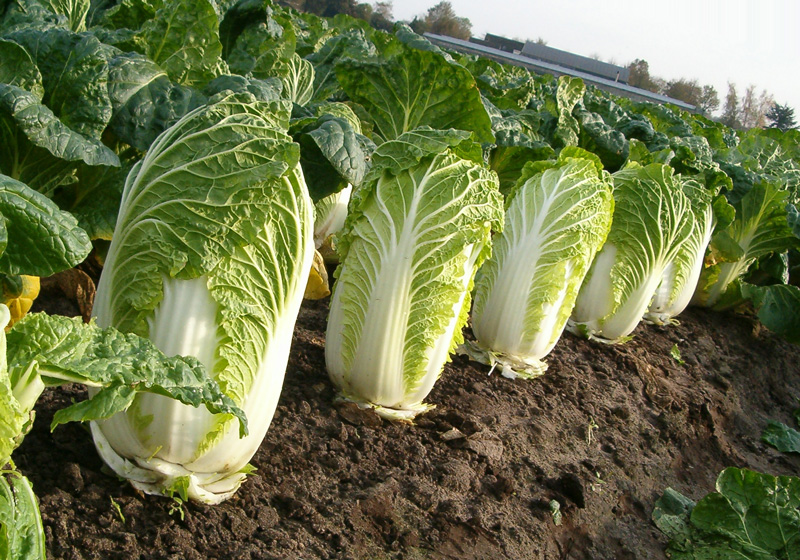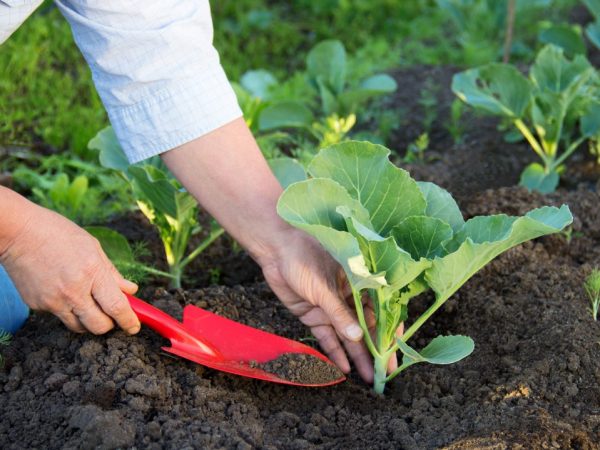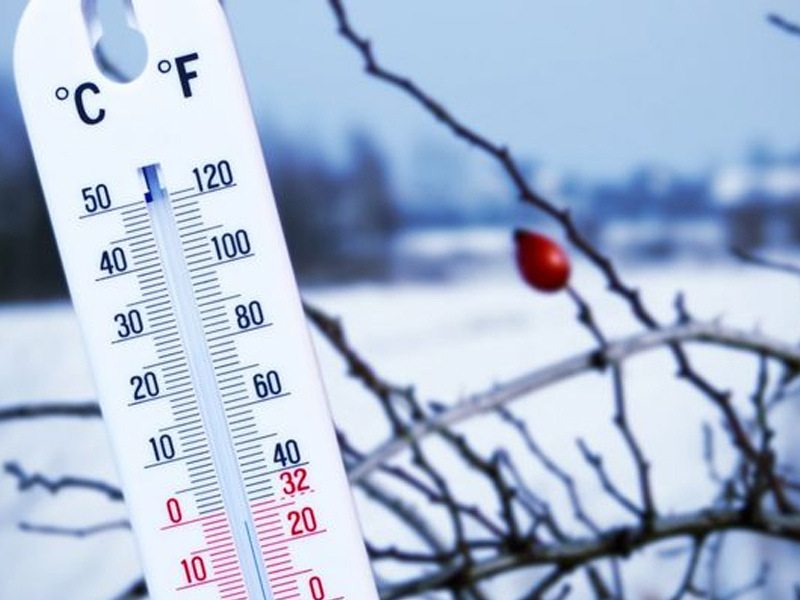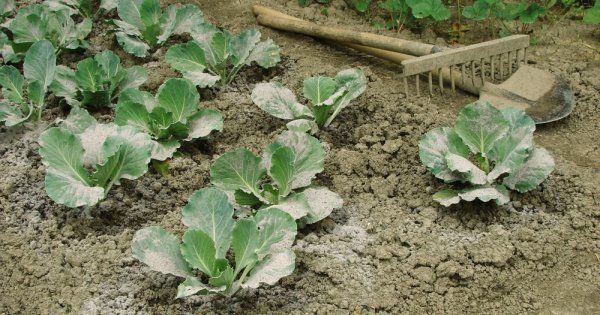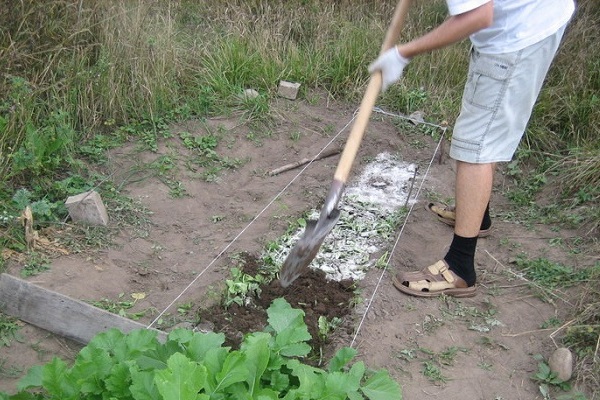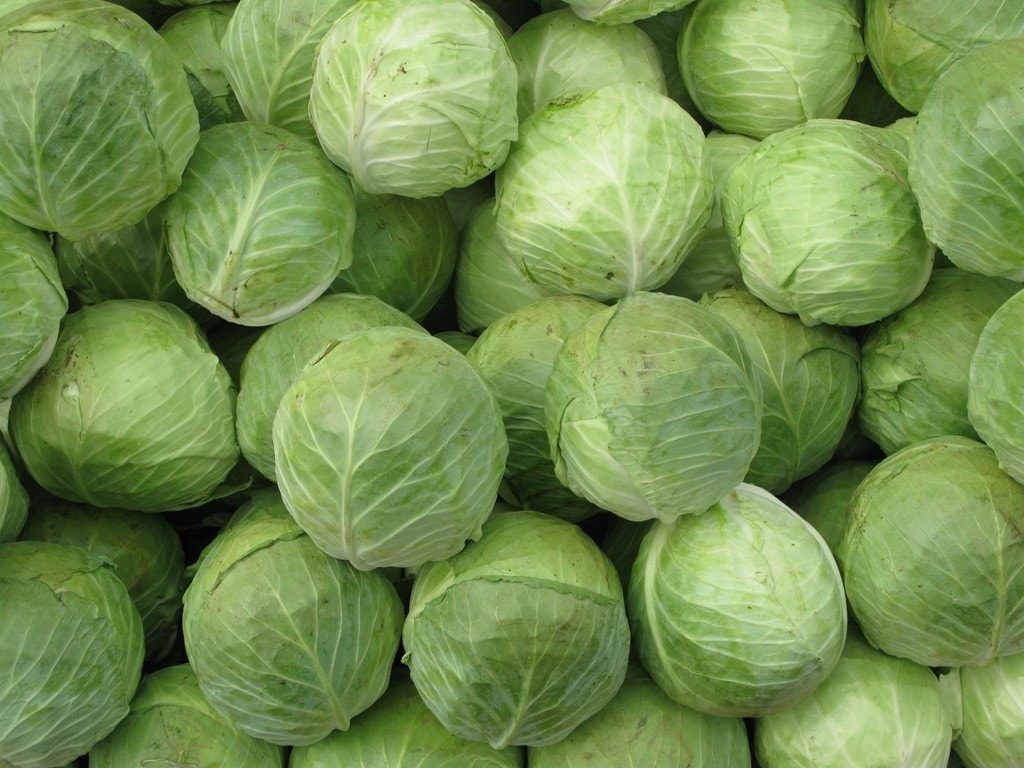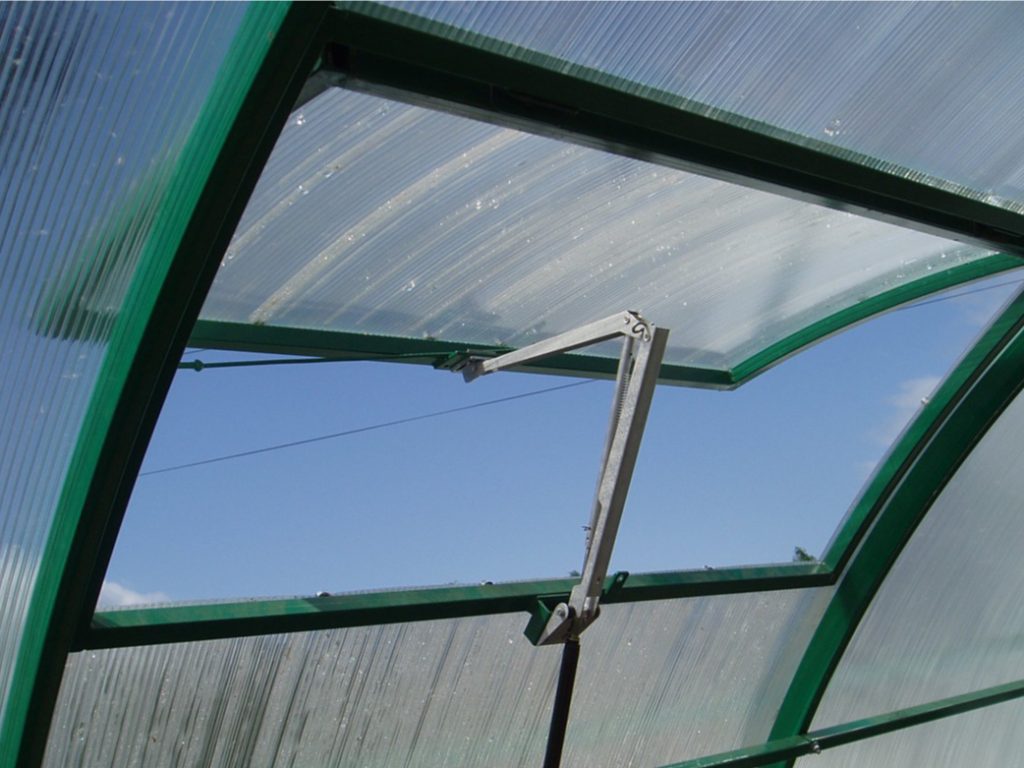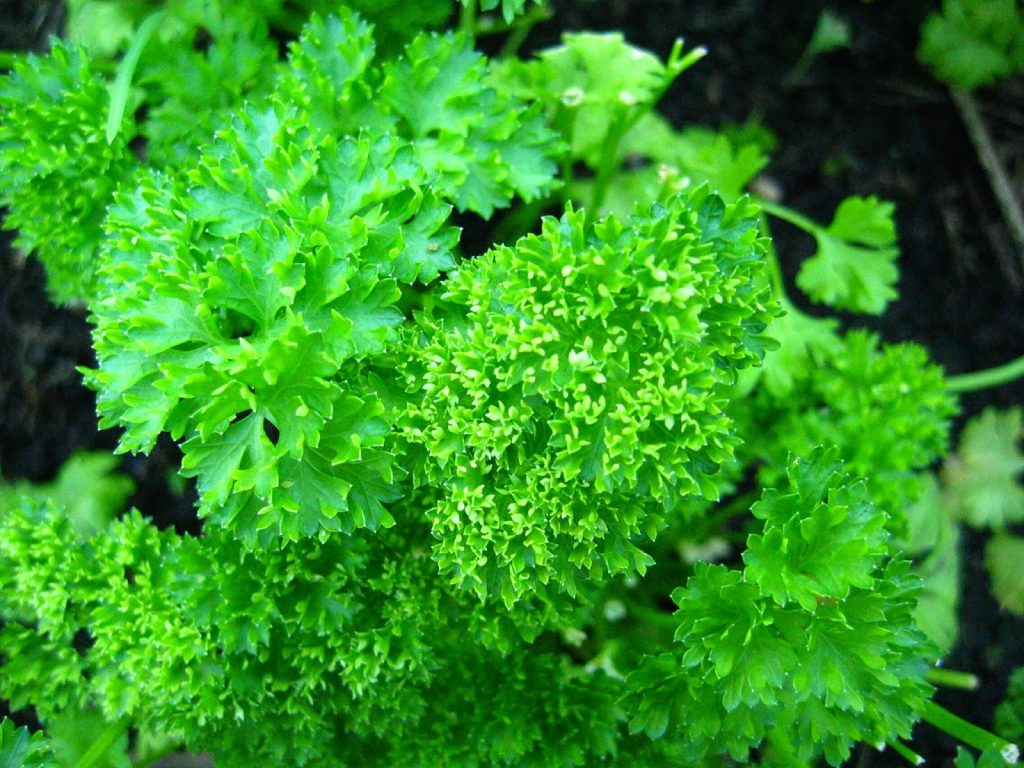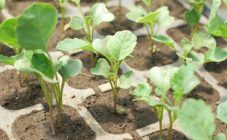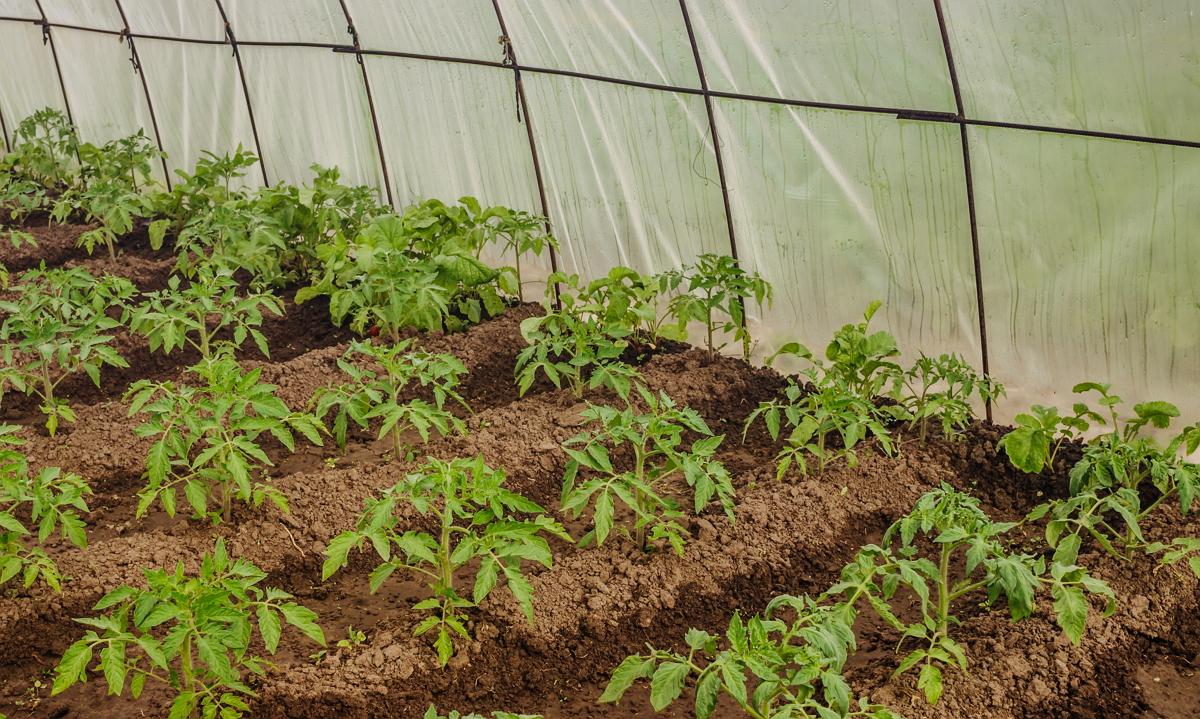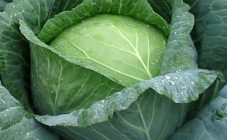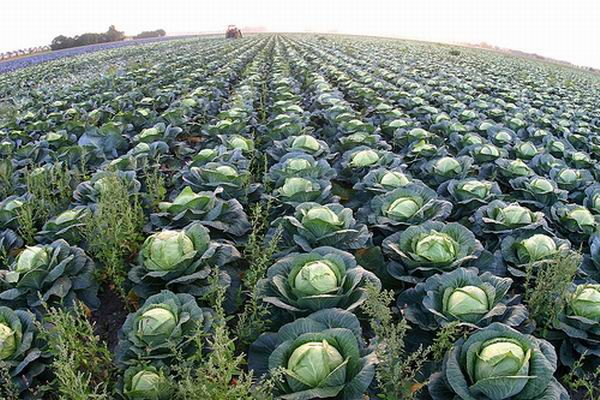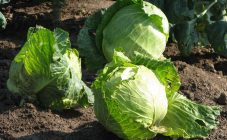Content:
Cabbage is one of the most widespread vegetable crops in Russia. This is not surprising, because this tasty and healthy vegetable is used in a huge number of culinary dishes.
Description of culture
It belongs to the biennial cruciferous plants. It has a tall, leafy stem.
In the first year, a root leaf rosette grows, which has found wide application in cooking, cosmetology, folk medicine, and in the second year, seeds are obtained.
Leaves are bare, usually grayish-green and bluish-green in color. In the lower tier, they are rather large, fleshy, with strongly pronounced veins. Due to the fact that they fit tightly to each other, a head of cabbage forms around the stem. The part of the stem located in the head is called the stalk.
Cabbage flowers are large, in a multi-flowered cluster and are yellow in color. The seeds are located in pods that reach a length of 10 cm. The seed is dark brown in color and has a spherical shape, up to 2 mm in diameter.
Why cabbage is useful
The leaves of this vegetable contain carbohydrates, proteins, fiber, polysaccharides, phytoncides, carotene, enzymes, vitamins A, B1, C, P, K, B6, etc. The vegetable is also rich in the content of mineral salts: potassium, phosphorus, calcium and sulfur.
In folk medicine, it is used in the treatment of purulent wounds and ulcers, gastritis, high blood sugar, constipation, etc. With the help of cabbage juice, excess fluid is removed from the body.
In cosmetology, on the basis of cabbage juice, cosmetic masks and rinses for the skin of the face are made.
Types and varieties of cabbage
There are the following types of cabbage:
- - cabbage;
- - colored;
- - kohlrabi;
- - Savoyard;
- - sheet;
- - Beijing;
- - Chinese.
Cabbage
There are the following types:
- - white cabbage;
- - redhead;
- - Brussels.
The most popular type is white, it forms a head of cabbage of light green color. In order to increase the period of using fresh vegetables, varieties with different ripening periods have been developed. The most common early varieties (ripening - from 70 to 120 days): June, Kazachok, Parel, Golden hectare, etc. Of the mid-season varieties (ripening up to 140 days), the most popular are: Slava, Sugar Queen, Merchant, Atria, etc.
For long-term storage, cabbage of late maturity is used. Most often, gardeners grow the following varieties: Aggressor, Amager, Kolobok, Mara, Moscow late, Snow White, Megaton F1.
The leaves of red cabbage are burgundy purple in color. Early-maturing, mid-maturing and late-maturing varieties are grown. The most popular are Kalibos, Stone Head. Mars, Languedaker, etc.
In Brussels sprouts, small heads of cabbage are located around the stem, which can be eaten fresh, stewed, canned, and frozen. Common varieties: Franklin F1, Long Island, Merry Company, etc.
Late varieties of cabbage are harvested in late October - early November (depending on the region). In this regard, the question of how the plant tolerates low temperatures is pertinent, and whether the cabbage is afraid of spring frosts.
Cauliflower
It is an annual plant. In cooking, a head is used, which consists of fleshy flower shoots located tightly to each other.
There are the following types:
- colored;
- broccoli;
- Romanesco.
To preserve nutrients in winter, canning or deep freezing are used.
The most popular varieties of cauliflower are Snow Globe, Regent, Express, White Beauty, etc. broccoli - Lord, Fiesta, Gnome, Agassi, Marathon, etc.
Kohlrabi is a biennial plant, in the lower part it has a stem-grower that looks like a turnip. The most popular varieties are Piquant early ripening, Smak, Violetta, etc.
Savoy cabbage has a loose head, with loose leaves. In the gardens, Vienna early, Golden early, Vertu, Melissa, Alaska are popular.
Collard greens are biennial plants. In the first year, a short stem is formed. In the second year, a peduncle appears. Grown for decorative purposes and for culinary use. It may not freeze even if it is freezing outside, reaching -15 ° C.
Peking cabbage is grown for one year. Forms a head of cabbage or leaf rosette. Favorite varieties of gardeners - Russian size, Martha, Victoria, Cha-cha, etc.
Chinese cabbage is an early maturing annual plant. A bit like a Beijing view. Grown for heads or leaves. It can be planted in August and autumn and can be used in cooking various dishes. Popular domestic varieties are Swallow and Vesnyanka.
Growing cabbage seedlings
Any kind of cabbage can be grown in seedlings or non-seedlings. They mainly use the seedling option.
The main advantage of this method is that you can get an earlier harvest by planting the seeds earlier. Thus, cabbage, which is grown in seedlings, has a certain run compared to the one that is grown in a seedling method, which is determined by the age of the plants and the phases of its development.
Sowing is carried out on the beds in greenhouses or in seedling boxes located indoors. Depending on the type of cabbage, the following planting dates for cabbage are usually followed:
- early - from the beginning to the end of March;
- medium - end of March - end of April;
- late - mid-April.
Savoy cabbage seeds are sown from the second half of February (for early varieties) to April, Brussels cabbage - in April, cauliflower planting time - March-April.
Cabbage sprouts usually appear fairly quickly. Plants begin to sprout about 10 days after sowing.
After warm weather settles, young plants need to be planted in the ground, where they will grow in a permanent place. The optimum temperature range for planting is + 10-15 ° C.
During transplantation of seedlings to a permanent place, the strongest and most developed plants are selected, which allows you to get a good harvest from the site in the future.
Usually, planting is carried out in May (depending on the region), but frosts are possible during this period.
Cabbage and frozen
In various regions, the period of possible cold snap can last until mid-June.
Whether cabbage seedlings are afraid of frost, what kind of frosts the cabbage can withstand in spring, and how low temperatures can affect the quality of the crop, depends on which species and variety was chosen for growing.
Seedlings of a plant with a seedless growing method die at -3 ° C. If the seedlings were grown in cold greenhouses or pre-hardened before planting on the garden bed, then they can withstand a short-term temperature drop to -5 ° C, but in this case the total weight and quality of the finished heads of cabbage decreases.If on the street the degree drops below -5 ° C, then the seedlings die.
Causes of freezing cabbage
Consider the reasons for the death of cabbage during frosts. For the development and life of cabbage seedlings in the spring, both frosts and heat are harmful.
If the air temperature drops below 0 ° C, then the water in the plant cells freezes and turns into ice. It is known from the physics course that if water is frozen, then when it freezes, it increases in volume. The same thing happens in plants. When frozen, the liquid tears apart the seedling cells from the inside, and the cabbage dies. Sharp thawing after sunrise is especially dangerous for plants.
The influence of low temperatures can aggravate the wrong choice of planting site, as well as the condition of the seedlings.
Risk areas for cabbage
Plants should not be planted in heavy soils or lowlands. Light loamy areas, well protected from the wind, are suitable for her. In addition to the constant stagnation of moisture in the lowlands, the air during frosts is 2-3 ° C lower than in the flat areas.
For optimal plant development, the soil must not be acidic. On such soils, cabbage will not be able to develop normally, it will hurt, and the fertilizers that you apply will not be able to be completely absorbed by the seedlings. Therefore, if the soil is acidic on the site, then it needs to be limed. For these purposes, dolomite flour is perfect, which will additionally enrich the earth with potassium. In the absence of flour, you can use chalk, ash or lime. Only lime can be used exclusively during autumn digging, so as not to damage the seedlings.
Whether cabbage is afraid of spring frosts, and how much the seedlings will be affected, also depends on the general condition of the plants. If they are healthy, managed to strengthen and have grown well, then in this case the seedlings will recover from stress much faster, and the damage to the crop will be minimal.
To grow healthy seedlings, you need to observe the temperature regime. The optimal range is 12-20 ° C. Higher temperatures lead to the fact that the seedlings begin to lag behind in development, they turn out to be weak and not so viable.
It is also necessary to monitor the water regime. Cabbage is a moisture-loving plant, but watering should be such that there is no stagnation of water in the holes. Excess water, as well as its lack, can lead to diseases or death of plants.
Resistant seedlings in white cabbage
Is young broccoli cabbage afraid of frost, and how many degrees can seedlings of other types of cabbage withstand?
Seedlings of color, Beijing and broccoli can withstand short-term frosts down to -2 ° C.
However, cabbage is exposed to low temperatures not only in spring but also in autumn, since autumn is harvest time. White cabbage is usually harvested in late October - early November (depending on the region).
For mature plants, the lower temperature limit is slightly pushed back as compared to young plants. For example, white cabbage can withstand cold up to -7 ° C, cauliflower - up to -5 ° C. Heads of cabbage are even recommended to be removed from the site after the frost begins. After freezing, cabbage leaves lose their bitterness, and the vegetable becomes sweetish in taste.
Frost protection methods
In order not to worry about whether or not cabbage seedlings are afraid of spring frosts, and how not to freeze young plants, it is best to cover the seedlings after planting. To do this, a greenhouse is installed above them. The foil can be opened during the day so that the plants are not hot, and closed at night. You can also protect your plantings by using cut plastic bottles that cover each seedling. Seedling protection should be mandatory if early planting of plants on ridges is planned.
In order for the seedlings not to be damaged by exposure to low temperatures, it is necessary that its leaves do not touch the covering material.
If there is a threat of cold snap, you can cover the seedlings with old newspapers, buckets, plastic bags, boxes, etc.
If severe frost is expected, plant irrigation can be used. It is usually produced at night a few hours before the onset of low temperatures. In this case, the water evaporates from the ground in the cold, the temperature rises slightly, and the cold air does not fall to the soil surface.
Mulching or planting seedlings on warm ridges will also help protect plants.
If your plants were not protected, then you can help the cabbage to transfer frosts in the following ways:
- Early in the morning, you need to spray the damaged leaves with cold (not warm) water and shade them so that the plants thaw more slowly. This thawing will slightly soften the effects of frost.
- The use of special antidepressants - chemicals that are sprayed on damaged plants - has proven itself well.
Also, to increase the tolerance of seedlings at low temperatures, the plants must be pre-tempered.
Seedling hardening
A preventive measure is the hardening of young plants. In the process of hardening, the seedlings are gradually accustomed to life at lower temperatures. Hardened plants tolerate frost much better than those grown continuously at elevated temperatures. It is the hardened seedlings that withstand frost down to -3 ° C, while the unhardened seedlings die at this temperature.
For hardening, about half a month before planting on the ridges, boxes with seedlings begin to be taken out into the street during the day in warm weather, gradually increasing the time of its stay in the fresh air. The daytime air temperature should fluctuate within + 12-15 ° С, and the nighttime temperature should not be higher than + 8 ° С.
2-3 days before disembarkation, seedling boxes can not be brought into the house. But this is done only when frost is not expected on the street.
Comparison of frost tolerance
Currently, gardeners, in addition to cabbage, grow a number of frost-resistant vegetables. For example, seedlings of onions do not die at frosts down to -3 ° С, onion-batuna - at -7 ° С, celery - -4 ° С, parsley - -8 ° С, etc.
For zucchini shoots, the temperature is + 0.5 ° C, for cucumbers - -1 ° C, peppers die at 0 ° C, and tomatoes - at 1.5 ° C. Taking into account the fact that cabbage seedlings do not die at -5 ° C, and adult plants tolerate a decrease in temperature to -7 ° C, we can say that in terms of frost resistance it is among the vegetable leaders.
Thus, in order to obtain a good harvest, it is imperative to properly grow seedlings and protect the plants from the effects of low temperatures in spring. Then there will be tasty and healthy cabbage on the table, which was grown on its own plot.
